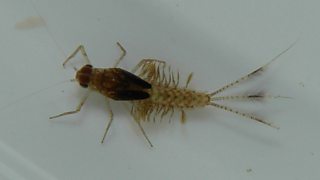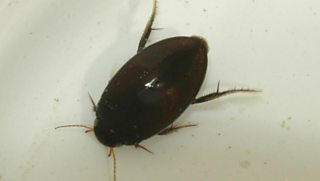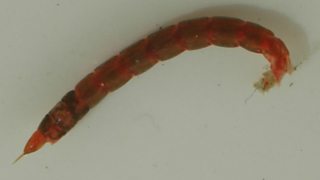Guest blogger: Jeremy Biggs, director of Pond Conservation
It may be a cool and damp spring, but my garden pond is looking splendid. Full of underwater plants, there’s a dense mix of submerged mosses and stoneworts, a sure sign of clean water. So the pond is looking promising for animal life: what can we find with the pond net? I already know there will be plenty of frog tadpoles – at least 50 females spawned in our 2m diameter pond.
So, first dip – as well as the taddies, hundreds and hundred of pond snails. Mostly marsh snails, a few wandering snails, and four kinds of ram's-horn, including the tightly coiled contorted and whirlpool ram's-horn snails. Then fairly quickly I find flatworms, the spidery larvae of the common darter dragonfly, the zippy larvae of the pond olive mayfly.

Mayfly larva - Cloeon dipterum, copyright Pond Conservation
After 5 or 10 minutes I've got a pretty good idea of the commonest creatures in the pond. Now I'm taking a bit of time to find the true variety. In another five minutes I find the first cased caddis: they should be present in every good pond. There are quite a few different water beetles too, including a nice find for the garden: a screech beetle.

Water beetle - Agabusbipustulatus, copyright Pond Conservation
But the best and biggest comes last and it’s taken 20 minutes to find: the 4 cm long larva of an emperor dragonfly. For those who like to keep score I've got to 42 out of 68 on the Big Pond Dip. The animals are telling me my pond is in good shape.

Wigglies - Chironomid, copyright Pond Conservation
See what's living in your pond and take part in the .
